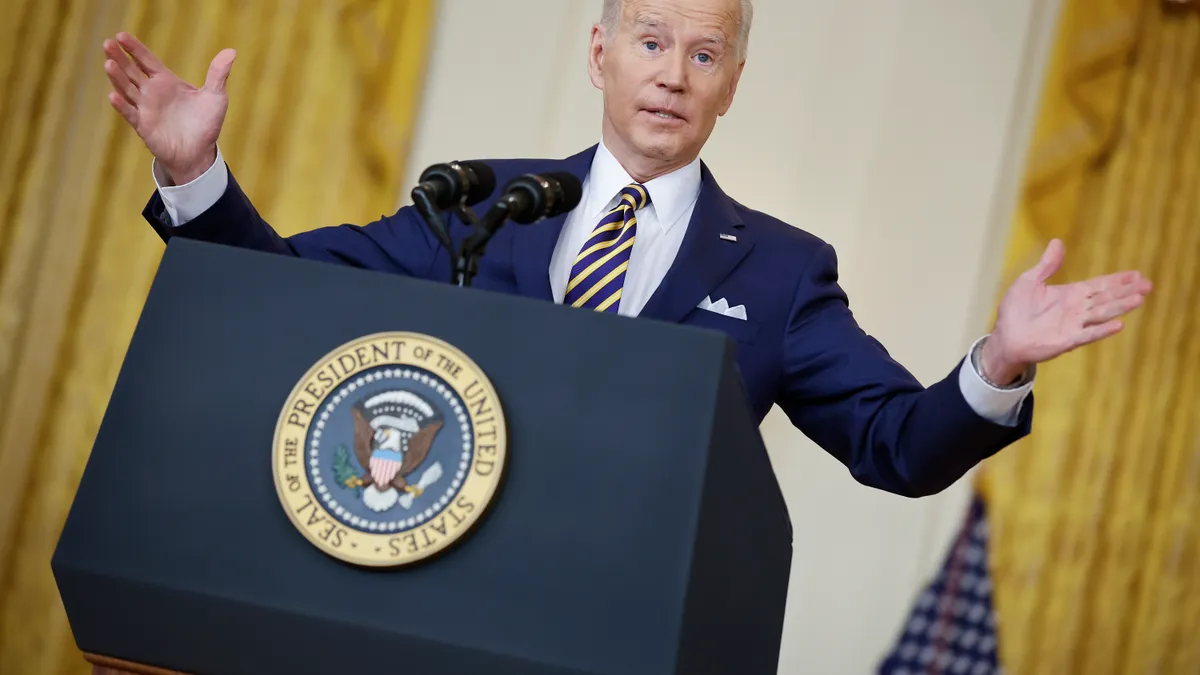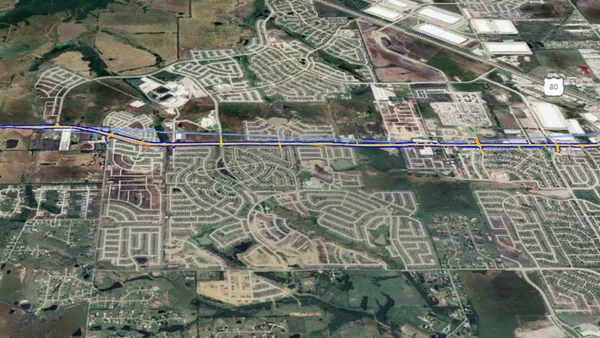Dive Brief:
- President Joe Biden signed an executive order Friday requiring project labor agreements on federal construction projects over $35 million, according to a White House fact sheet.
- The order, which is effective immediately, impacts $262 billion in federal construction contracts and affects nearly 200,000 workers.
- Nevertheless, the new executive order does not apply to work funded by grants to non-federal agencies, which includes the bulk of the projects funded under the $1.2 trillion Infrastructure Investment and Jobs Act, a senior official told Reuters.
Dive Insight:
Biden signed the executive order at Ironworkers Local 5 in Upper Marlboro, Maryland, on Friday afternoon. The White House claimed that the order will help alleviate management issues and coordination on major construction projects.
"This helps projects get completed on time and helps the government get the best value for taxpayers' dollars," the White House statement said.
A PLA is a pre-hire collective bargaining agreement between employers and labor organizations that establishes terms of employment on a specific construction project. They are often required on construction projects that involve state or federal funds.
Associated Builders and Contractors lambasted the executive order, saying that Biden's agenda will reduce competition between builders and raise construction costs.
"PLAs steer contracts to unionized contractors and workers at the expense of the best-quality nonunion contractors and workers who want to compete fairly at a price best for taxpayers," Ben Brubeck, ABC vice president of regulatory, labor and state affairs said in an statement.
Brian Turmail, vice president of public affairs and strategic initiatives for Associated General Contractors of America, said the AGC was eager to see the details of the order, but found it confusing that the administration would try "to solve a problem that doesn't exist." Construction workers have seen demand for their work increase, Turmail said, making it a workers' market.
Empowering unions
Mark Erlich, fellow at Harvard's Labor and Worklife Program and retired executive of the New England Carpenters Union, said the advantages of PLAs are many.
"On larger projects, PLAs allow for an uninterrupted access to skilled labor working under standardized and uniform terms and conditions," he said. "I believe their value has been established and most of the objections have been refuted."
In addition, Erlich said that Community Workforce Agreements, which are a type of PLA that includes language to bring workers of color and women into construction careers, effectively expand diversity in the industry.
Biden has made it clear that empowering unions is an important part of his platform, and he has long said that increased infrastructure spending will "drive the creation of good-paying union jobs."
Unionization has been in decline across the country for decades, though construction's percentage of union members has stayed above the nationwide average, according to new government data. Last year, 12.6% of workers in construction were union members, a slight decrease from 12.7% in 2020.
This story has been updated to reflect that President Biden has signed the order.














